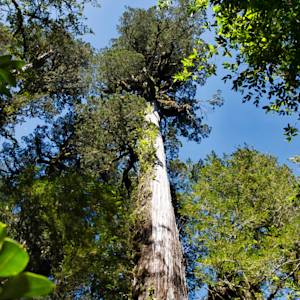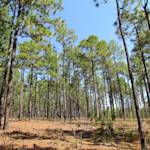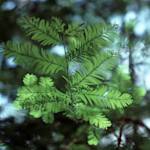Bristlecone Pine
2022 CE • Western United States
"No organism on Earth is known to live as long as the Great Basin bristlecone pine. The oldest documented tree, a well-hidden specimen nicknamed “Methuselah,” after the long-lived biblical patriarch, was a sapling when the ancient Egyptians built their pyramids more than 4,500 years ago . . . They exist at higher elevations than almost any other tree, thriving in the rocky, meager soils near rugged mountain peaks. Their branching root systems and waxy needles help them make the most of scant water. They produce a thick resin that traps insect invaders and quickly patches wounds. Their genomes, which are nine times as long as a human’s, contain a multitude of mutations that give them a better chance of adapting to changing conditions . . . They deal with crisis by sectioning off parts of their structures, enabling the rest of the tree to keep living while the injured limb is allowed to die. Their wood is so dense it rarely rots; the trunks of dead trees will remain standing for millennia . . . Scores of other creatures benefit from the trees’ persistence . . . Bristlecones provide shade to elk and bighorn sheep, and shelter chipmunks and jack rabbits from predators and fierce weather. They allow snow to cling longer to the mountains’ upper slopes, ensuring a supply of meltwater during the brutal summer months. And their staying power makes them invaluable to scientists. Bristlecone tree rings have allowed researchers to reconstruct a record of Earth’s climate going back thousands of years; the field of research is known as “dendrochronology.” The rings reveal when volcanic eruptions occurred, how long droughts lasted, even when the surface of the sun became blotted by magnetic storms." Although the species is not considered at risk of extinction, scientists are noticing devastating declines. The decline of the bristlecone pine is increasingly attributed to factors such as climate change-induced drought, fungal pathogens, and human disturbances encroaching upon its high-altitude habitats.
Sarah Kaplan, "Scientists rush to save 1,000-year-old trees on the brink of death," The Washington Post, July 15, 2022.
Image: Jim Morefield from Nevada, USA, CC BY-SA 2.0, via Wikimedia Commons


Learn about Maya Lin’s fifth and final memorial: a multi-platform science based artwork that presents an ecological history of our world - past, present, and future.

Discover ecological histories and stories of former abundance, loss, and recovery on the map of memory.

Learn how we can reduce our emissions and protect and restore species and habitats – around the world.

See how art can help us rethink the problems we face, and give us hope that each one of us can make a difference.

Help make a global memorial something personal and close to home. Share your stories of the natural world.


